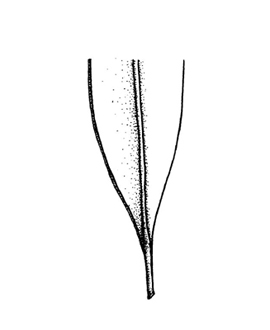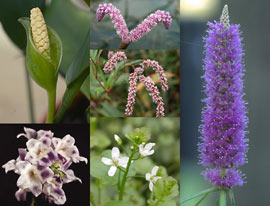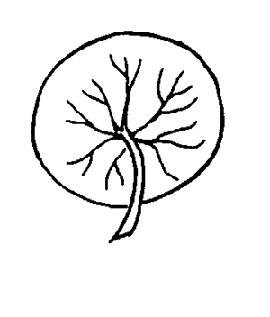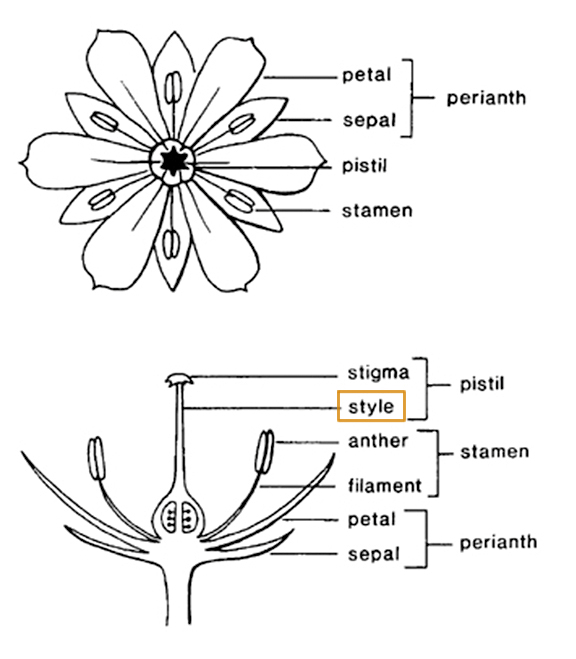Peliosanthes Andrews
China lily, tropical lily of the valley
Asparagaceae
Lagenandra, Ophiopogon, Piptospatha
southeast Asia, particularly India
Peliosanthes sp.
Peliosanthes teta subsp. humilis [P. javanica] (rarely cultivated)
information not available
information not available
terrestrialterrestrial:
(adj) growing on land as opposed to living in water
herb; able to tolerate short periods submergedsubmerged:
(adj) (syn. submersed) under water; submerged below the water surface
Small to medium rosetterosette:
(n) a radiating cluster of leaves, usually close to the ground at the base of a plant
 plant. Rhizomatousrhizomatous:
plant. Rhizomatousrhizomatous:
(adj) possessing rhizomes
; sympodialsympodial:
(adj) a type of branching in which the main stem branches into successive repeated dichotomous branches
branching, rarely caulescentcaulescent:
(adj) having a more or less well developed above-ground stem
. Leaves basalbasal:
(adj) at or pertaining to the base, or point of attachment
; petiolatepetiolate:
(adj) relating to or in the form of a petiole; bearing petioles
, sheathing; leaf bladeblade:
(n) (syn. lamina) the flat, expanded part of a leaf, frond, or petal (excluding, e.g., the petiole)
 linear to ellipticelliptical:
linear to ellipticelliptical:
(adj) in the form of an ellipse (oval)
 ; apexapex:
; apexapex:
(n) the point farthest from the point of attachment; the tip (often pointed)
typically acuteacute:
(adj) tapering to a sharp, pointed apex with more or less straight sides; broader than acuminate; forming an angle of less than 90 degrees ; base attenuateattenuate:
; base attenuateattenuate:
(adj) narrowing gradually to a point
 to round; venationvenation:
to round; venationvenation:
(n) the arrangement of veins in a leaf
parallel. Inflorescenceinflorescence:
(n) the arrangement of flowers on the floral axis
 a many-flowered racemeraceme:
a many-flowered racemeraceme:
(n) an indeterminate, unbranched inflorescence having pedicelled flowers on a usually elongated axis (may be cymose)
 ; scapescape:
; scapescape:
(n) a leafless flowering stalk arising from ground level in acaulescent plants
erect; bracts membranous; pedicelspedicel:
(n) the stalk of a single flower in an inflorescence, or of a grass spikelet
 articulated near apexapex:
articulated near apexapex:
(n) the point farthest from the point of attachment; the tip (often pointed)
. Flowers small, greenish red to purple; tepals 6, fused into a short tube, lobes 1/3 to 2/3 as long as tepals; stamens 6; filaments connateconnate:
(adj) of plant parts congenitally united into a single structure
in a fleshy, epipetalousepipetalous:
(adj) (of stamens) arising from the petals
corona, inserted on inside of the nectarynectary:
(n) a specialized gland producing nectar
; stylestyle:
(n) in a flower, the narrow and elongated part of the pistil between the stigma and the ovary
 conical to trigonoustrigonous:
conical to trigonoustrigonous:
(adj) three-angled
; stigmastigma:
(n) the portion of the pistil that is receptive to pollen
capitate or trilobed.
forests, from lowlands to mountains
Peliosanthes, a genus comprising about 20 species, is far from well defined. Although none are truly aquatic, some species of Peliosanthes are often offered as aquarium plants in stores; these are able to tolerate short periods submergedsubmerged:
(adj) (syn. submersed) under water; submerged below the water surface
and greater periods in flooded soil.